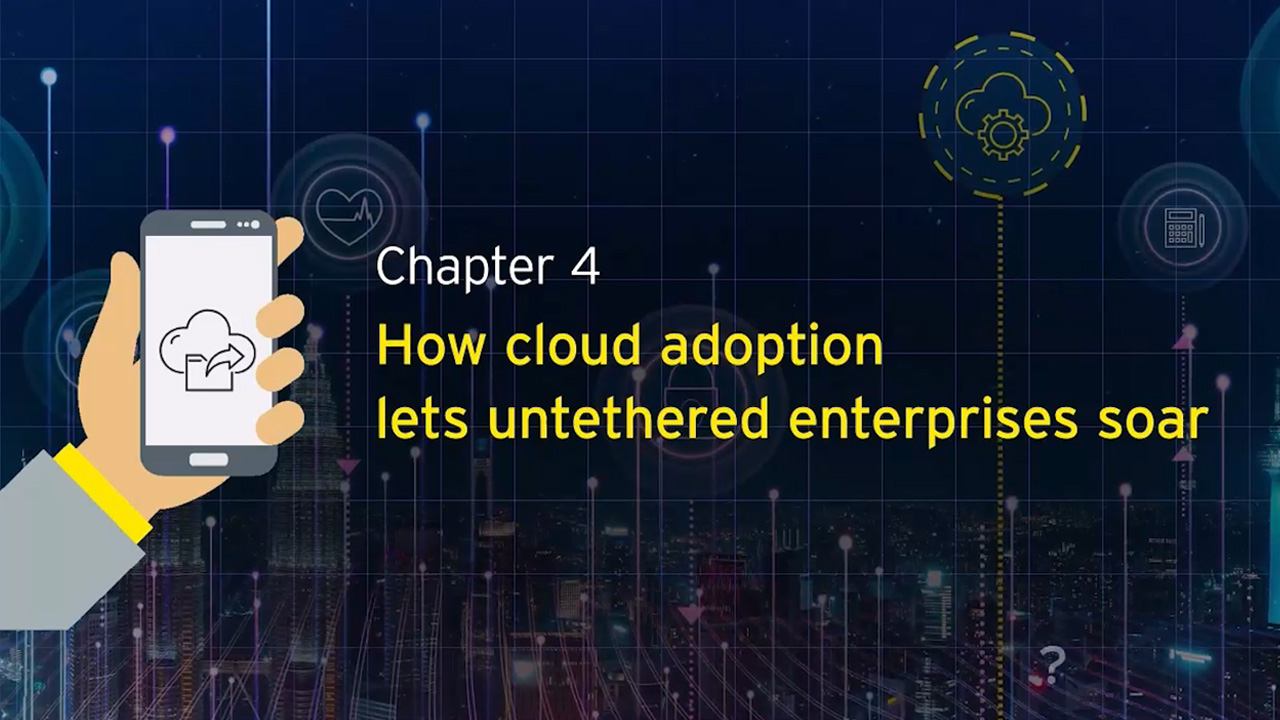While startups and new-age companies are cloud-first or cloud-native, larger organizations are adopting multi-cloud (use of two or more cloud computing services that enable migrating between cloud providers or operating concurrently across the cloud providers) as well as more specialized industry-specific cloud solutions.
Not just organizations, but consumers too, have started accessing anything and everything from the cloud. Coupled with that, remote working has spurred cloud adoption across industries. In a recent survey conducted by EY, respondents across industries and organizational sizes said they consider remote working, change in organizational processes and product/services delivery, connecting with customers and getting a competitive edge among the primary factors pushing cloud adoption. Companies, large or small, have migrated their data and applications to the cloud.
Fit to size
As the technology matures, cloud providers are adding customized capabilities specific to the needs of customer segments and industries, from highly scalable offerings to pay-as-you-go models.
The rise of industry clouds tailored for specific verticals instead of a one-size-fits-all approach, is gaining momentum, especially in retail, BFSI, and manufacturing sectors post-pandemic. Hyperscale Cloud Service Providers (CSPs) and large Global-System Integrators (GSI) are coming up with vertical cloud platforms that are hosted on public clouds and are a combination of software, platform, and Infrastructure as-a-Service (IaaS) to provide specific solutions. This approach allows companies more agility in managing workloads and being equipped to adapt their industrial processes and applications faster.
Large business conglomerates are building their own sector-specific cloud solutions. Based on their deeply entrenched sectorial knowledge, these solutions are customized and address hard-to-tackle vertical challenges. However, companies are not only building these solutions for in-house usage but also aim to monetize them soon.
Organizations are also moving from a hybrid cloud structure to a distributed cloud architecture. A distributed cloud helps organizations connect applications and data from various geographical locations. It optimizes performance by taking advantage of public cloud, hybrid cloud, and edge computing. While a distributed cloud is managed centrally, it can compute locally, which reduces latency and network failure. This improves performance and compliance with regional regulations.
For new-generation enterprises that are not weighed down by legacy or non-cloud tech debt, the ‘Cloud First’ or ‘Cloud Only’ approach has been easy to adopt. In multiple high-customer interaction industries such as retail, fintech, and logistics, this approach has allowed younger, nimbler firms to take a lead over older, bigger traditional rivals that are weighed down by legacy technology debt, though the latter are evolving to remain competitive.
To bridge the gap with legacy systems, some companies are rationalizing their application portfolio by modernizing and rehosting the applications wherever possible. To improve operations, they are building cloud-native products as bolt-ons to existing enterprise apps. Among the cloud service options, Software as-a-Service (SaaS) continues to be the most preferred deployment option among Indian organizations, thanks to the flexibility and affordability of subscription-based offerings and centrally located remote cloud networks. Organizations with legacy technologies are, therefore, adopting cloud native products to modernize business and technology functions as well as make processes and operations more agile. Similarly, with IaaS, they are exiting data centers and may go for wider infrastructure modernization, especially in compute and networks. With cloud-based data technologies such as data lakes and AI platforms, companies are tapping data strategically to get insights.
Apart from SaaS, IaaS and Product as-a-Service (PaaS), companies are even moving toward Environment as a Service (EaaS) offerings. EaaS essentially extends IaaS, SaaS, codes, and configuration into the application and accelerates overall development and marketing.
While many firms are using vertical clouds with sector-specific platforms to avoid customizing legacy systems and applications, big enterprises with legacy technology debt are finding their own solutions with the help of OEMs and others to transition to cloud with the least pain. OEMs’ Plug-and-play and No-Code/Low-Code modules are helping big traditional enterprises add cloud-based functionalities rapidly.



